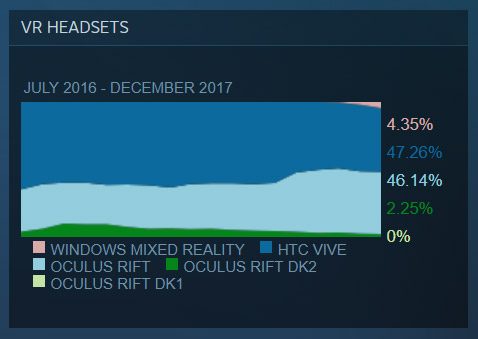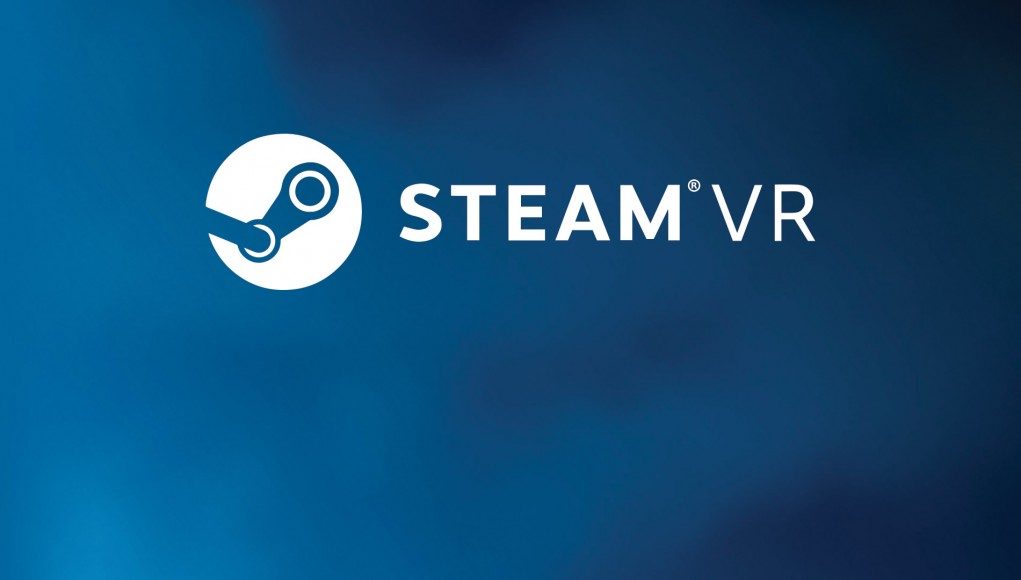According to the just-released December figures from Steam’s Hardware & Software Survey, the Oculus Rift has for the first time claimed the ‘Most Popular’ designation on the platform. Meanwhile, Windows VR is starting to make a mark in marketshare of VR headsets in use on Steam.
Steam is the de facto content platform for the HTC Vive, though it technically supports the Rift too; plenty of Rifters use both the official Oculus Home platform and Steam to play content which may not be available on the opposing platform.
Each month, Valve runs a survey among Steam users to determine some baseline statistics about what kind of hardware and software is used by the user population, and to see how things are changing over time; that includes which VR headsets are connected to users’ computers. Participation in the survey is optional.
The latest results for the month of December show the Vive losing 2.2%, bringing its share of VR headsets in use on Steam to 47.3%. Meanwhile, the Rift picked up a tiny 0.1% increase, putting it at 46.1% share, and neck and neck with the Vive for control of the plurality of the platform.

Interestingly, while the Vive still holds the plurality, the latest survey lists the Oculus Rift as Steam’s ‘Most Popular’ VR headset—used by 0.17% of the Steam population compared to the Vive’s 0.16%. The edge is razor thin, and may well be within a margin of error, however this is the first time we’ve seen the Rift hold the designation over the Vive since the headsets launched back in 2016.

Given the data provided by the survey, it isn’t entirely clear how the ‘Most Popular’ headset is calculated, so we can’t be sure exactly why the Rift claimed the designation despite holding a smaller headset marketshare on Steam. We’ve reached out to Valve for clarity.
While still far behind the incumbents, the Windows VR headsets are starting to make their mark. In November, Windows VR headsets gained the ability to play SteamVR content. According to the survey, Windows VR headsets in use on Steam more than doubled month over month, climbing from 2% in November to 4.4% in December. Especially once the ‘Windows Mixed Reality for SteamVR’ module leaves early access and becomes better publicized, it’s expected that this segment will see continued growth.
The Rift DK2 development kit also gave up 0.25% share compared to the month prior, making way for greater share of other headsets. The DK2, which launched in 2014, still holds 2.3% of the total share of VR headsets in use on Steam. Combined, the consumer Rift and the Rift DK2 hold 48.4% of the Steam VR headset share.
Exactly how many Rift users use Steam among the total population of Rift users is unknown, making it largely futile to extrapolate the data in an effort to determine headset market share across all platforms. Many analyst estimates put the Vive ahead of the Rift in total sales, though in the consumer space, Oculus’ aggressive price cutting has allowed the headset to gain significant ground over the course of the last few months. Oculus also recently introduced an ‘Oculus for Business’ package, attempting to capture some of the commercial market where Vive appears to have a strong hold.
Though it seems to have been a strong holiday season for VR headset sales—with reduced prices and bundles aplenty—most of the gift giving falls toward the end of December; with some folks likely busy with family and friends through New Year’s, we won’t likely see the true impact of the holiday season on Steam’s figures until January’s data is published.
The latest figures could mean several things beyond just more headsets in the hands of new users: a portion of the gains and losses may have been made up not only by new headsets entering the market, but could have come from existing owners using their headsets more or less than in months prior (potentially driven by anticipated game launches, or lack thereof).







